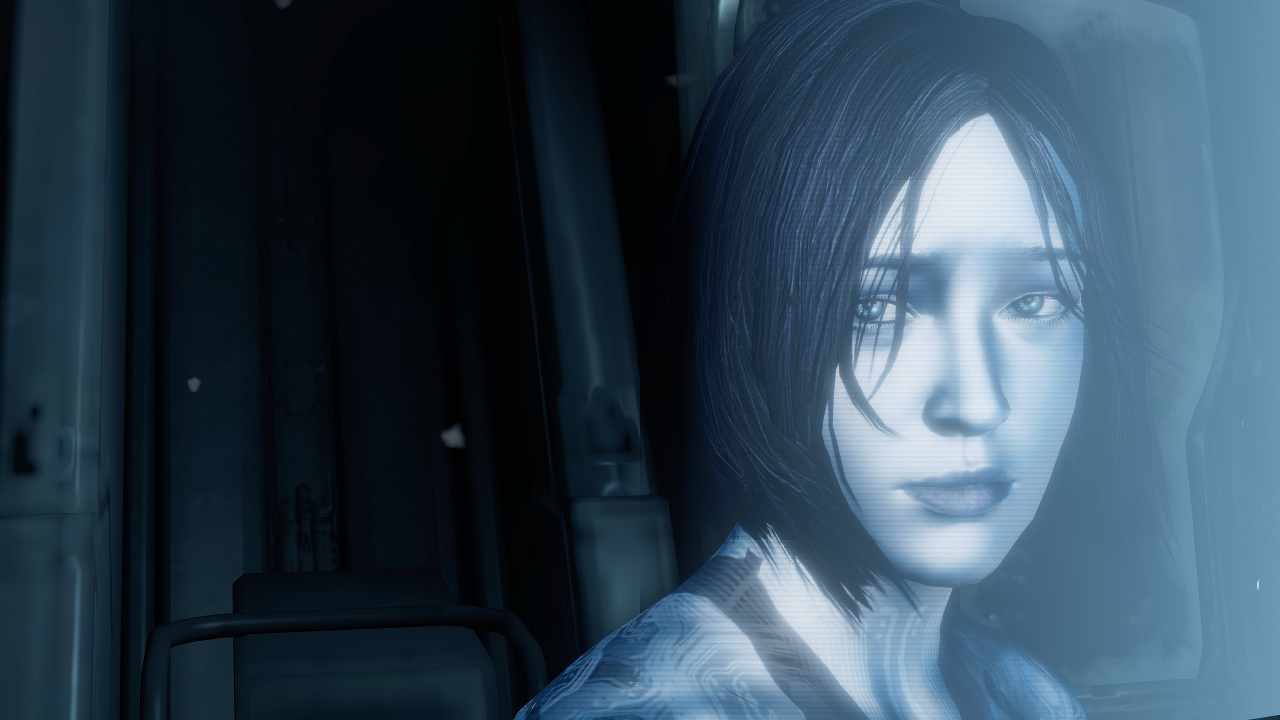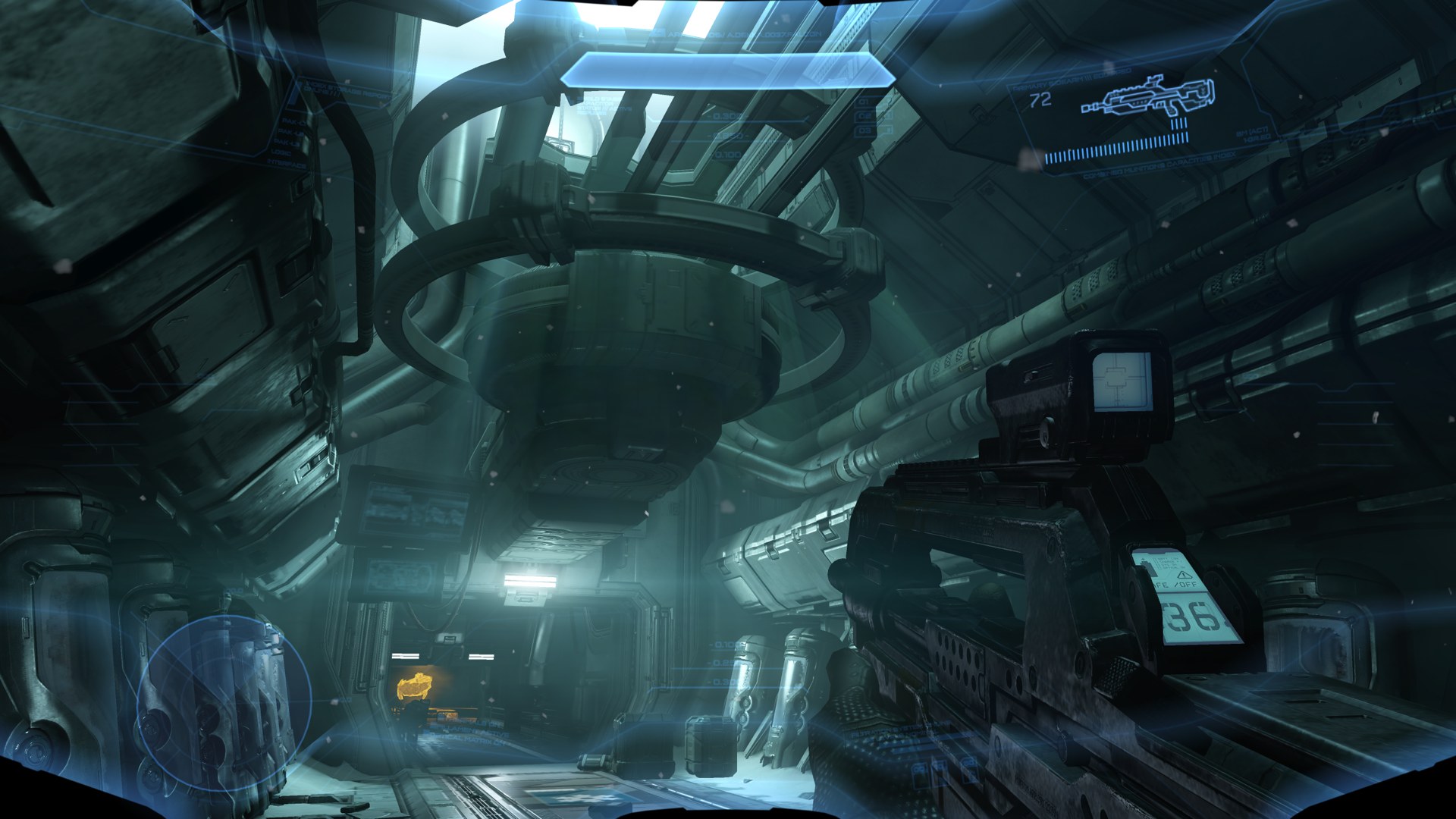Halo 4 - Single Player Review
However scared you might have been to watch Bungie hand Microsoft’s baby off to the newly erected 343 Industries, playing Halo 4 it’s evident they were nothing compared to the internal expectations being heaped upon Master Chief’s return. Halo’s legacy is such that I don’t need to tell you how much Microsoft is putting in to making sure it never stops being one of the largest, most critically acclaimed franchises in games, going so far as to spawn a new studio of hundreds of the industries most talented developers to work on it. All of this is apparent the moment you press start and Halo 4 begins its reintroduction to an industry icon. It’s one of the most lavishly produced games I’ve ever played, every polygon perfectly rendered and polished, each scene expertly frame, every mechanic blending smoothly with the next in a tight seamless loop. The production values and mechanical refinement gushes out of the screen at such a high quality that it almost feels like too much. It’s too clean, too calculated and intentional, the work of years of testing and innovating to make a game that will not allow itself to be missed.
But through all of this, Halo 4 doesn’t feel like the manufactured product of millions upon million in development and marketing, designed like a money-making machine forged through data and playtesting. It has a soul, a personality, the way so many AAA games don’t. It may be the most expensive game Microsoft has ever made, but they didn’t bet it on a hollow shell sold on name alone. Rather Halo 4 is the culmination of everything Halo has ever been, brought to life by a new team but without losing what made it a household name in the first place. There were a lot of ways Halo 4 could have gone, but you can rest easy because 343 has not only managed to channel the series heritage, they’ve surpassed it.
Halo 4 is the first game in the series where the story isn’t about worlds and races, it’s about characters. Yes, there’s a plot of otherworldly creatures threatening the future of humanity, but it’s neither interesting nor important to the story Halo 4 really wants to tell between Master Chief and Cortana. They’re characters we’ve come to know over a decade, but have always been the mostly silent saviors of the galaxy, whose purpose is to protect humanity at any cost. Their personal narratives were never largely discussed, but Halo 4 wants you to care about these characters as more than immortal guardians; not as a super soldier and genius AI, but as people, forced to come to terms with the fact that they are and always will be just people.
Halo 4 attempts to create a human element in a landscape of empty faces and meaningless dialogue. The interactions between Cortana and Master Chief feel meaningful, if only in that moment, and develop these characters into people you want to care about. Halo 4 is still perpetually attached to its action movie plotline and at times is completely unaware of the challenges it keeps running into in trying to be more than that, but rather than bringing the two together, 343 creates room for both to exist on their own.
Cutscenes are crafted not as objective descriptions, but scenes of character development and emotional turmoil. It’s the silence in these moments, the careful panning of the camera, and the facial expressions and body language of characters that causes it to feel authentic despite its relative mundanity. 343’s understanding of a very filmic vocabulary allows it to create moments of impact in ways games have so often struggled. It still fails in a lot of ways by being all but required to include the usual alien supervillains and being designed from a male viewpoint (please, give Cortana some clothes), but it’s enough to hold it together and make me care about what happens to these characters within at least the context of itself.
When the shots begin to fly much of Halo 4’s narrative aspirations become background noise to the churning of systems that have never been so fluid. This is still the same Halo you love, but the switch to a new developer has provided a certain distance from those games to allow 343 to trim the fat that’s been clinging to the series for years.
Levels are more guided than ever, solving the series long issue of constantly becoming lost, but not at the cost of making levels anymore narrow or linear. Battlefields are as huge and multilayered as ever, they’re simply designed in ways that make it more apparent where and how to traverse them. I’ve long admired Halo’s sandbox level design, but I’ve never felt I was comparatively able to make use of it the way I did in 4. Secret pathways, weapon stashes, and new vehicles give you a huge assortment of options in how you approach a fight, and rather than throw them at you like blank pieces of a puzzle subtle cues are placed all around to help ensure you’re always capable of choosing the approach you want, not just the one you can see.
And you’ll need to experiment with different strategies, as enemies as well have become more systematic and proficient in taking you down. Halo 4 introduces a whole new class of enemy, the Prometheans, but while they're featured heavily in fights 343 never relies on them exclusively. Instead, each fight feels like a careful arrangement of enemies designed to work well with each other within the space they’ve been given. Gone are the random collections of grunts and elites, replaced with ruthless combinations that coordinate tactics and flank you incredibly well. Halo 4 is a challenging game, but it’s one that always feels like the resort of ingenious AI rather than brute force, requiring you learn enemy patterns and attack formations more than ever if you hope to get through alive.
Luckily you’ve got a larger, more explosive arsenal of weapons than ever before at your disposal, almost all of which embody their role in battle exceptionally well and make any firearm a joy to use.The newest additions are of course the Promethean weapons, which blend elements from human and Covenent arms into new tools of destruction. These are often the least immediately clear how to use, but also among the most deadly if you exploit their intended functions. These are joined by awesome variants of old favorites like "the needler" and hallmark pistol, which feel familiar but even more usable than before, often appearing in instances where you’d be most inclined to want them without restricting your choice in gun.
Perhaps then the only true obstacle is keeping your jaw off the floor, as Halo 4 easily ranks as one of the most stunning games I’ve ever seen, leaving me baffled as to how it’s managing to look like it does on such dated hardware. Character models are pristine and emotive, environments glisten with expert post processing and immaculate lighting, and tiny details stand out in every corner. At times I felt the need to stop and admire the particle effects of a dissolving enemy, or the bombardment of colors tracing through the skyline. It’s such a pretty world it almost feels wrong to shoot so many holes in it, but then I’d glimpse the way bullets ricochet or how my muzzle lights up a dark hallway and find myself drooling yet again.
Final Word
I have a lot of love for the Halo series, but it always felt just a little loose to me, full of great mechanics but often allowing less savory elements to come along for the ride. Halo 4 in contrast is the most polished, feverishly trimmed game the series has ever received. It personifies everything I’ve loved about the franchise while refusing to stand still and enjoy the triumphs of past games, always looking forward and paying close attention that everything it takes with it is only that which deserves to be there. If this is the Xbox 360’s swansong, it’s fitting it’s one of the very best games to ever grace the console, and the best game in the series that made the Xbox what it is.





